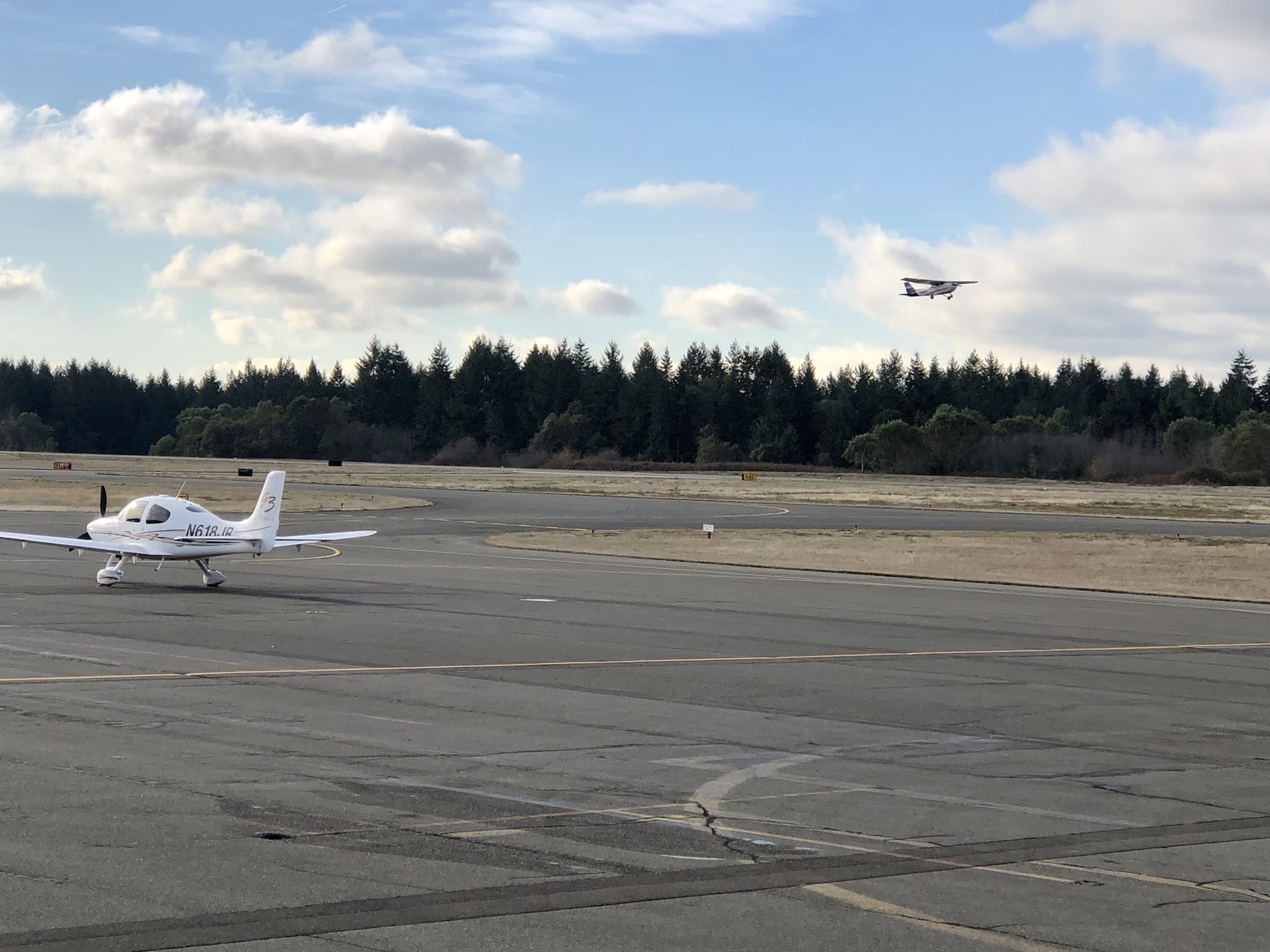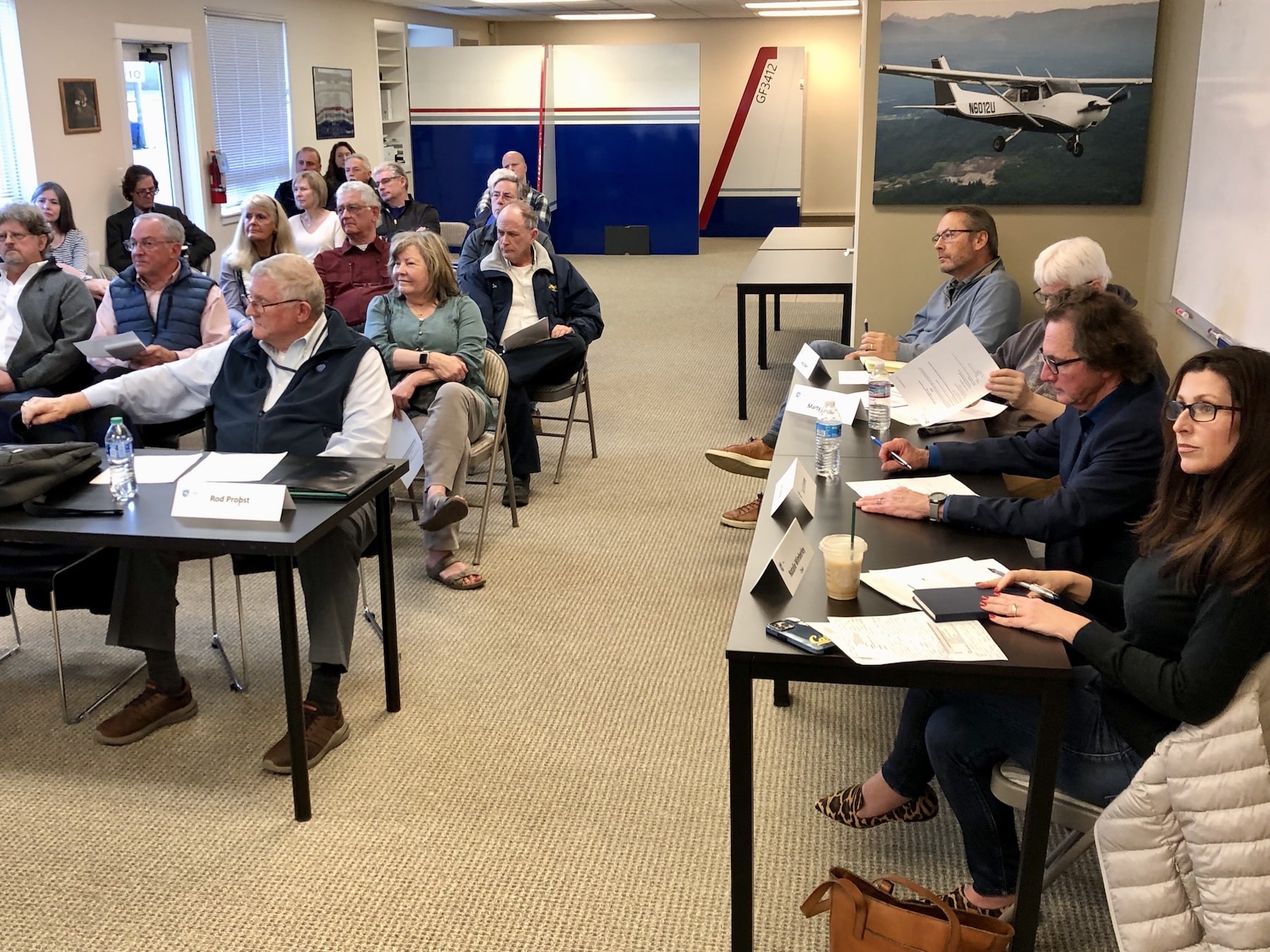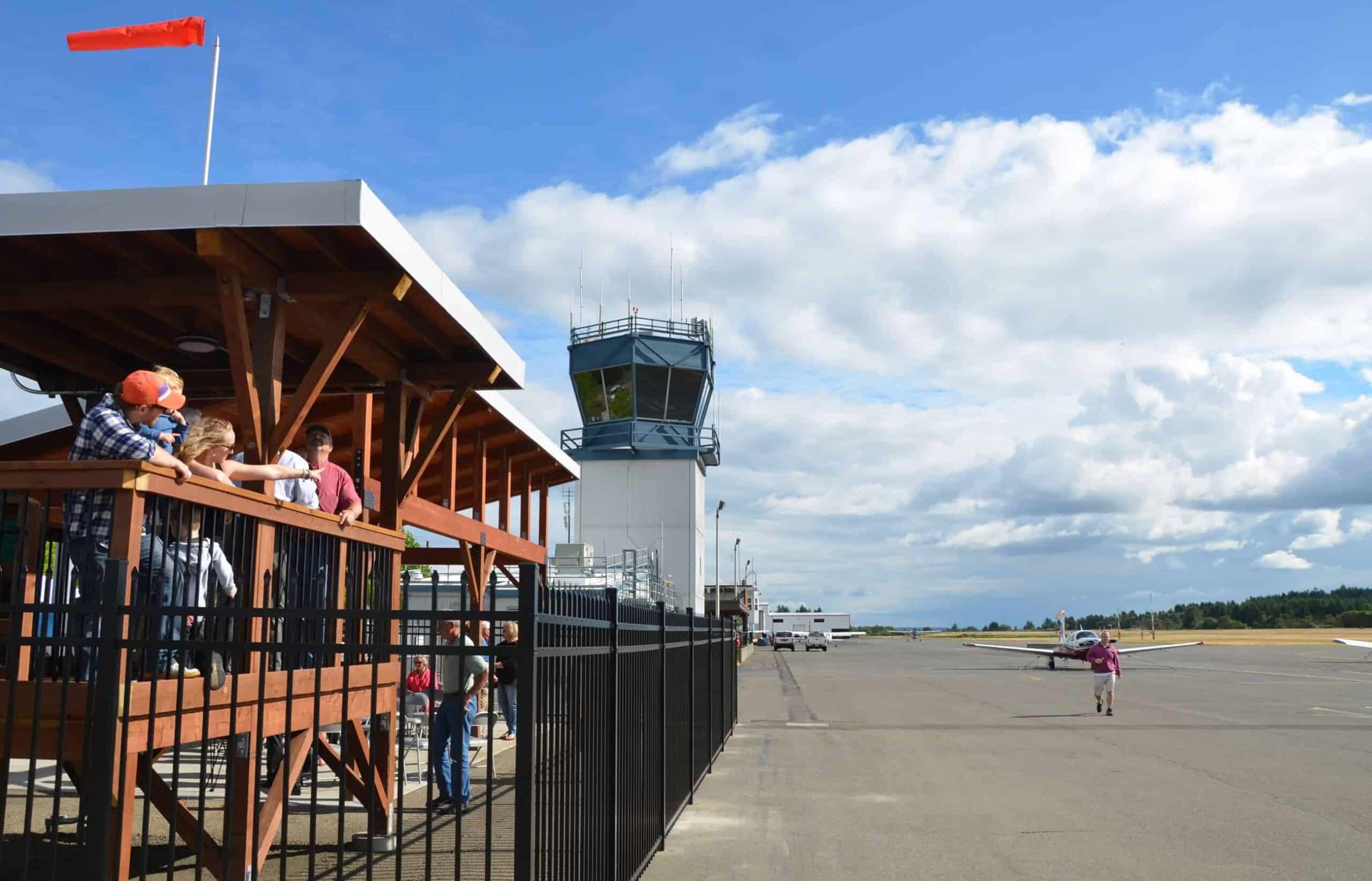Business Community Government
Airport advisory meeting audience questions loss of trees, taxi lane
Concerns voiced during a Tacoma Narrows Airport Advisory Committee meeting Tuesday night split between saving trees and fearing a lease amendment proposal could clog plane traffic.
An environmental assessment that included clear-cutting 51.7 acres of airport forest and selectively logging 2,055 other trees was approved a year ago. However, chainsaws won’t be broken out until at least next fall.
Twenty-six people remarked during the assessment’s public comment period that tree removal would increase plane noise, kill wildlife, destroy habitat, reduce air quality, and cause the loss of rural character, shade and beauty. Each concern received a response, but resulted in no changes to the document.
The airport is undertaking a handful of projects and as a condition must comply with all FAA regulations, including removing trees that are too tall. Otherwise the agency could withhold future grants, Airport Manager Rob Propst said in December.
Three projects in the works
The projects include shifting the main taxiway 50 feet to the east so it’s an FAA-required 400 feet from the runway; rerouting another taxiway to divert direct access to the runway, per FAA regulations; and adding more security fencing to keep wildlife out of operating areas.
Crews will log selectively when possible to retain surrounding vegetation. They’ll clear and grub where trees grow so densely that it’s not practical to harvest them individually.
Tree removal is estimated to cost $4.6 million, with the FAA funding 90%. The work will be conducted three to four months per year over the next few years to remain outside of the migratory bird nesting period.
Sandra Bobrick, who lives nearby on Point Fosdick Circle, was one of about 20 residents who attended Tuesday night’s meeting at Rainier Flight Services. She said Tacoma Narrows is classified as a noise-sensitive airport, yet no noise studies were conducted. The county said the FAA requires a study when projects involve more than 90,000 annual aircraft operations, or for a new airport location, new runway, major runway extension or runway strengthening.
Airport operations were 89,631 in 2018, 92,267 in 2019, 76,412 in 2020, 91,792 in 2021 and 94,530 last year, according to records presented at the meeting.
‘How can we stop it?’
“This is for what purpose?” Bobrick asked of the tree cutting. “What noise studies have been performed and, most importantly, how can we stop it?”
The airport received four noise complaints in the previous 90 days, Propst said. The prior quarter there were none.
“It isn’t necessary to cut them all down,” said Jocelyn Paulson, who also lives near the point of Point Fosdick. “It can be selective. That would be my preference and that of other homeowners, or topping.”
The environmental assessment said topping would be a temporary solution because trees would grow back and make the airport ineligible for FAA funding.
Councilmember Denson asks for second look
New Pierce County Councilmember Robyn Denson is a member of the advisory board. A scheduling conflict prevented her from attending Tuesday’s meeting, but she said Friday, April 7, that she had mailed a letter to the FAA after hearing from residents.
“They question whether all the studies that should’ve been done have been done,” she said. “Tacoma Narrows Airport and Planning and Public Works believe they’ve done everything they’re required to do. Residents are concerned, and I certainly understand their concern. It’s sad to lose this many trees, and I want to make sure it’s absolutely necessary.”
Denson is asking that the FAA take another look to see if some acres could be spared.
“Anytime you’re talking about removing this number of trees, we want to be as thorough as is possible in our analysis because once these trees are cut, when they’re gone, they’re gone,” she said. “Safety is everybody’s top priority. Nobody is disputing that. We need a safe airport and we definitely need and appreciate FAA funding for airport improvements. I hope the FAA will take another look to make sure we absolutely need to cut all the trees they’ve identified so far.”
No work until fall
The airport is awaiting final design plans. Then it can advertise for a contractor, secure a $9 million grant slated for fiscal year 2023 and hope it will cover the bid, Propst said.
“Nothing would happen until fall,” he said.
Worries about losing taxi lane
Several people spoke of their concerns about possibly losing a small taxi lane in front of the hangars. PAVCO Flight Center, Juranich Aviation Services and Tacoma Narrows Aviation need more space because they’re servicing more larger private jets. They have parking ramp space as part of their current leases, but planes often encroach into the east side of the taxi lane, creating liability for the county. They asked the county to process lease amendments to add aircraft parking space to the grass median. The county would charge them an additional $41,000 per year.
The taxi lane is only 40 feet wide and doesn’t have an object-free area of 110 feet, violating FAA regulations, Propst said at the January advisory meeting.
Air Traffic Manager Rob Hasslinger reported at the January meeting that losing the taxi lane would disrupt traffic flow, resulting in departure delays, go-arounds, repositioning and towing delays, and congestion and controller saturation.
It would jam up the main taxiway, said Brad Pattison, a pilot who has been involved with the airport for 33 years, including serving on the advisory and master plan committees.
He defined three options: widen the taxi lane by cutting into the three companies’ ramp space, which could hurt their business; extend the leased space as proposed in the amendment, which could hamper 200 tenants’ ability to move about the airport; or apply for a variance to keep things as they are.
‘Takes a non-problem and makes it worse’
“Aircraft have been transiting there since 1962 without any problems,” he said. “This takes a non-problem and makes it worse no matter which choice you select. The best solution is to keep things how they are now because it works so well.”
Natalie Wimberley, who recently became advisory committee chair, said she would ask that a lease decision be delayed so she can schedule a special study session in May.
“I share your concerns. I hear you loud and clear,” she said. “It’s important to get these discussions out in the open so the decision-makers can hear what the will of the people is.”
Lease decision on hold
The three lease amendments are at different stages of the review process, said Planning and Public Works spokeswoman Amanda Smith. They are now on hold until after next month’s advisory committee study session and until the FAA signs a new airport layout plan that shows the taxi lane removed.
The lease amendments were originally sought by the flight service firms. The airport didn’t engage in the process until the draft airport layout plan was submitted to the FAA, Smith said.
The January advisory meeting was the first public discussion of the lease amendments and didn’t draw much interest, Smith said. The county hasn’t begun a notification campaign because the FAA has yet to approve removing the taxi lane, which is required to move forward with the lease plan.



